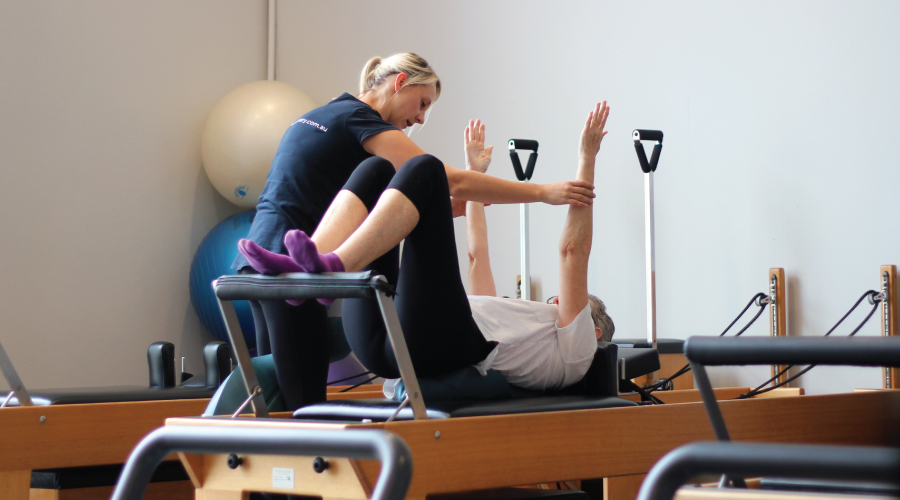A combination of Physiotherapy and specific exercise protocols in a Pilates program are the key to a successful Pilates workout.
Why change something if it’s not broken?
Pilates has been around since the early 1920’s. Recently, physiotherapists have started returning to exercise-based therapy and in particular, the Pilates method, which can provide a number of benefits, according to evidence-based studies (3).
The first Pilates teaching courses for physiotherapists in Australia started in the early 1990s, with an aim that Pilates would be another tool for physiotherapists to use. Postgraduate training (by teachers such as Butler, McKenzie, Sahrmann and Janda) along with spinal stability training and muscle energy techniques all had a part to play in adapting Pilates to a clinical setting (4).
Physiotherapists in Australia have traditionally used a “hands-on” approach in the acute stages of injury, which provides excellent outcomes to a point, beyond which exercise is a logical progression. Unfortunately, most patients progress to a gym setting that is often not appropriate or specific enough to address the underlying biomechanical causes, and all too often this aggravates the original problem.

Research over the last two decades has shown that the most effective way to manage spinal instability is with specific exercise programmes that are designed, and supervised, by a physiotherapist. Improving activity of the core group of muscles is now accepted as being more effective than other training regimes that focus on strengthening periphery muscles (4). Motor re-learning strategies that look more at muscle and movement efficiency are replacing strength and power regimes (3).
“The success of the Pilates system in managing pain, inhibiting pathology and training coordinated movements, is that it gives the physiotherapist a tool to be able to address the motor control specifics of dysfunction and more importantly problem solve the reason or pathology behind the situation” (4)
The value of Pilates to physiotherapists now extends beyond rehabilitation exercises, which act as an adjunct to treatment, to being a very effective treatment tool in itself. It can be employed as an alternative to “hands-on” management, helping the clinician to confidently progress to a more pathology-specific exercise regime rather than a programme of generic exercises (2).
_ _ _
Join our Clinical Pilates classes and focus on your health and mind-body connection. Call us on 07 3358 3915 or download our app.
Follow us on Facebook, Instagram and Twitter for a daily dose of Pilates and Wellbeing.
__________________________________________________________________________________
References
- Lim E et al (2011) Effects of Pilates Based Exercises on Pain and Disability in individuals with persistent Nonspecific Low Back Pain: A Systematic review with Meta-analysis. J Orthop Sports Phys ther Vol 21 (2)
- Tulloch E, Phillips C, Soles G, Carman A, Abbott H (2012) DMA Clinical Pilates Directional Bias Assessment: Reliability and Predictive Validity JOSPT: 42(8):676-687
- Wajswelner H, Metcalf B, Bennell K (2012) Clinical Pilates versus General Exercise for Chronic Low Back Pain: A Randomised Trial. Med. Sci. Sports Exerc, Vol.44 No 7, PP1197-1205
- Phillips C (2003) Pilates, the clinical changes are key. Musculoskeletal Physiotherapy Australia Newsletter IN TOUCH issue 2/3 2003
- Rydeard R, Leger A, Smith D (2006) Pilates-Based therapeutic Exercise: Effect on subject with nonspecific chronic Low Back Pain and Functional Disability: A Randomized Controlled Trial. JOSPT 2006;36(7): 472-484


